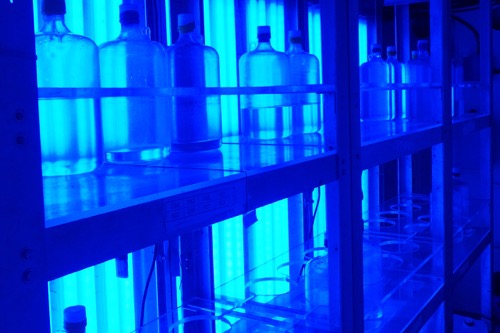Breaking Ice
We have moved just a bit since yesterday. The RVIB Palmer is still working around the clock to move through this pack ice area. It turns out that there is a lot more to breaking ice than just having a large, reinforced hull ship. Ice thickness, snow accumulation and wind are just a few of the factors that can combine in different ways to make the process of breaking ice easy or hard.
The hull of the ship is designed to use momentum, the reduced friction of ice and weight to ride up over the ice and break through the pieces. This process can continue as long as the ship can easily glide over the ice. The ice in our current area would probably not be difficult to break if it weren't for two things: snow and wind. The prevailing wind is this area is from the west. This wind direction is pushing the ice into a smaller and smaller area, basically packing the ice together and leaving very little room for the ice to move. Second, we have experienced a few evenings of snow in the past few days. Most of the time, it is too cold to produce wet, thick snow. This heavy snow left behind a deep layer of snow/slush on the top of the ice. This layer of slush increases the friction between the ship and the ice, causing the ship to reduce speed quickly and not rise up over the ice in order to create cracks.

An analogy, given to me by our Marine Programs Coordinator (MPC) Eric Hutt, is to think about skiing in the winter time. If you have ever skied at the top of the mountain, you can glide right over the hard, frozen snow. At the bottom of the mountain where the temperature may be a bit warmer, the higher amounts of slush will significantly reduce your speed. It is easy to feel this reduction in speed on the RVIB Palmer. The ship reverses direction and then moves forward toward the ice. You can feel the ship gain speed and then you can hear the slush and ice scrape along the side. As we reach the ice and begin to ride up on top of the ice, the speed reduces almost immediately before coming to a complete stop with what can only be described as a thud. If the slushy snow was not present, we would ride up on the ice, break it and continue forward. With the conditions as we are, we must continue to generate momentum by reversing our direction and ramming the ice again. It makes for slow progress and an interesting experience when running on the treadmill.
Science Update
Today was originally a day to gather samples for Incubation 3 only. This morning, after some analysis of water samples collected yesterday, it was determined that it was time to crash or stop Incubation 2. Remember, the science team is interested in collecting live diatom samples. If the diatoms are growing at a rate that will eliminate the nutrients in the bottles, the samples may not survive to day 12 or 14. With the data collected last night, it was determined that today was the day to collect the last samples. All Incubation 2 bottles were sampled and emptied. The incubation van now only holds bottles from Incubation 3. The van is almost empty - another indication of the cruise reaching its last days.

Southern Ocean Bacteria
In the 9-20-16 journal entitled Iron Continued, I discussed a specific molecule called a siderophore. This iron-binding molecule may aid diatoms in acquiring additional iron from their environment. The siderophores can be found in the water column or in association with bacteria. The types of siderophores found in the Southern Ocean water samples will be analyzed along with bacteria cultures to aid in possible identification of bacteria species that may produce some of these iron-binding molecules.
Bacteria have been identified in almost all locations on Earth. These microorganisms can be found in soil, inside our digestive system and even on our hands. Some bacteria, like those naturally found in our digestive system are beneficial. DiatomsDiatoms are one of the most common types of phytoplankton. Most diatoms are unicellular, although they can exist as colonies in the shape of filaments or ribbons. Diatom communities are a popular tool for monitoring environmental conditions, past and present, and are commonly used in studies of water quality. also benefit from their associations with bacteria. It is well known that diatom species associate with specific species of bacteria. This is true in many areas of nature, including the Southern Ocean.
Bacteria, referred to as extremophiles, are also found in extreme locations. If you have ever visited the Grand Prismatic Spring at Yellowstone National Park, a type of bacteria known as thermophiles live in the hot waters of the pool. These thermophiles thrive in hot temperatures, like those found in hot springs or hydrothermal vents. Bacteria are also found in extreme cold temperatures, like those in Antarctica. These bacteria, known as psychrotrophic bacteria, are capable of survival, growth or reproduction at cold temperatures.
Alexa Sterling from the University of Rhode Island (URI) is responsible for collecting samples to use for bacteria cultures. Yesterday's journal describes how the production of cell cultures can help create larger quantities of cells for future analysis. Alexa is using isolated diatoms and filters containing biomass to inoculate (implant) samples on to nutrient media in Petri dishes. If bacteria are associated with the diatoms or present in the biomass samples, they may use the nutrients in the media to grow and reproduce. These plates can then be used at the laboratory at URI for additional experiments and for identification of bacterial species.




Comments